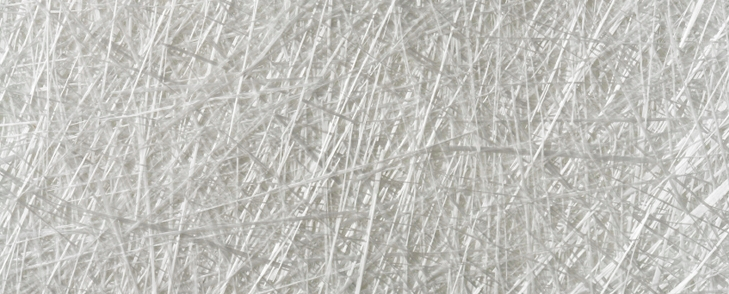
Fiberglass is one of the most studied human-made substances on the planet, and there are dozens of studies specifically designed to determine whether fiberglass poses any health hazard to humans. These third-party studies have produced a robust body of scientific evidence supporting the safety of fiberglass in air handling applications. However, despite the evidence supporting both its safety and performance, there are still some lingering fears about the safety of fiberglass. Primarily:
1. A belief that insulation glass fibers are potentially carcinogenic.
2. Whether or not fiberglass products can withstand prolonged exposure to an airstream without eroding.
These perceptions come from the initial fiberglass research that exposed test animals to glass fibers through surgical implantation into the abdomen rather than through inhalation. Clearly this is a route of exposure that would never be encountered in the real world, and it bypasses all the natural defence mechanisms inherent to the human body. The results of these tests indicated that fiberglass could pose a potential health hazard.
These test methods were the sole source of fiberglass safety research for many years. In the absence of well-designed animal inhalation studies, the World Health Organization’s International Agency for Research on Cancer (IARC) determined that these artificial implantation studies provided sufficient evidence to list fiberglass as a “possible carcinogen” in 1987.
Since these studies did not accurately replicate typical fiberglass exposure, Johns Manville voluntarily took responsibility to study the potential health effects of respirable glass fibers. It helped pioneer the efforts and was soon joined by the rest of the biggest names in the fiberglass industry in the endeavour to scientifically determine whether or not fiberglass presented any health hazard to humans. These studies required scientists to create innovative exposure methods that could accurately replicate actual inhalation exposure environments all in order to fully understand the interactions between fiberglass and live animal lung tissue.
The findings confirmed that insulation glass fibers dissolve in the lungs relatively quickly, removing any potential for the chronic inflammation that could lead to ill effects on the lungs.
The collaborative effort between the industry’s biggest fiberglass producers to test the safety of fiberglass ultimately led to a partnership between OSHA, the Occupational Safety and Health Administration, and NAIMA, the North American Insulation Manufacturers Association. They partnered to create the Health and Safety Partnership Program (HSPP) in 1995. As a public-private partnership, the HSPP was able to draw upon the wealth of expertise in the insulation industry under the watchful eye of OSHA, providing unbiased information about the health and safety of fiberglass.
The study of fiberglass didn’t just stop at inhalation studies. There were a series of additional studies that explored a variety of different facets of fiberglass exposure:
Human epidemiology studies: The human epidemiology studies explored the mortality rates in fiberglass manufacturing plant workers. Researchers studied the death records of deceased plant workers to determine the cause of death and compared that to the general population. These data account for nearly one million person-years of exposure to fiberglass.1
Findings: Individuals who worked in early fiberglass manufacturing plants (1945-1995) and who were exposed to much higher levels of fiberglass fibers showed no statistically significant increase in respiratory system cancer or non-cancer respiratory disease.
Exposure to inhalable glass fiber in indoor manufacturing and commercial settings: This study was performed to determine the concentration of organic and inorganic (such as fiber lass) airborne fibers in both commercial and residential indoor environments. 2
Findings: The results of these tests revealed extremely low airborne fiber concentrations in commercial and residential environments, averaging less than 0.008 fibers per cubic centimeter. More importantly, 97 per cent of the fibers found actually came from organic sources, like drapes or curtains, not from fiberglass. Thus the concentration of glass fibers in commercial and residential settings was less than 0.0001 fibers per cubic centimetre.
Resistance to erosion under extreme air velocities: Johns Manville tests its primary commercial and residential duct products to extremes to meet stringent UL-181 requirements. This means they must be able to withstand air velocities up to 12,000 feet per minute or more. These products are exposed to hurricane-force winds and air velocities that are three times faster than what would typically be found in any duct system.3
Findings: Even in such extreme environments, JM’s fiberglass insulation does not show any signs of cracking, breaking, peeling, flaking, erosion, or delamination.
The findings in each of these studies further confirm that the fiberglass used in these air handling products does not pose any respiratory health hazard to humans, and that there is a relative absence of fiberglass fibers in non-occupational settings.
Sources:
1. “Historical Cohort Study of US Man-Made Vitreous Fiber Production Workers: 1.” Marsh, et al. Journal of Occupational and Environmental Medicine. Volume 43, Number 9 (September 2001)
2. “A Synthetic Vitreous Fiber (SVF) Occupational Exposure Databse: Implementing the SVF Health and Safety Partnership Program.” Gary E. Marchant, et al. http://insulationinstitute.org/wp-content/uploads/2016/02/RP062.pdf
3. SuperDuct RC Data Sheet: http://www.jm.com/content/dam/jm/global/en/hvac-insulation/HVAC-document.



